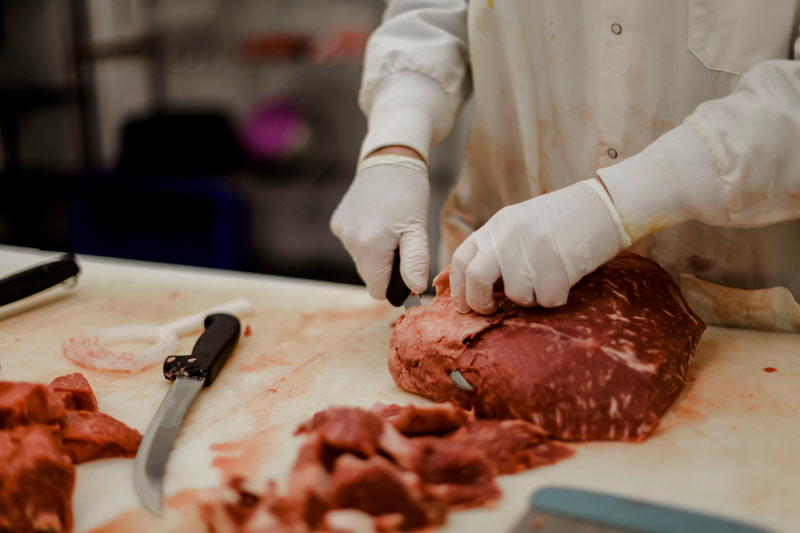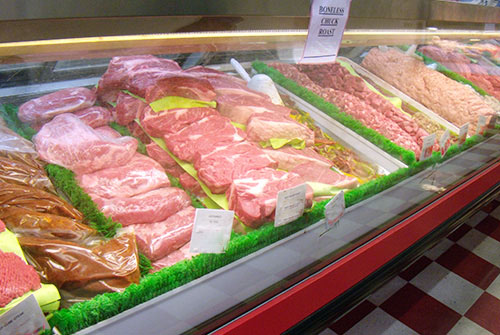Dive into Bagley Farms Meat Market: Quality and High Quality Guaranteed
Dive into Bagley Farms Meat Market: Quality and High Quality Guaranteed
Blog Article
Your Comprehensive Source for Professional Tips on Navigating the Meat Market Scene and Making Informed Purchases
Navigating the world of meat purchasing can often seem like a complex puzzle, with numerous cuts, grades, and labels including layers of details to the decision-making process. For those seeking to make informed choices and raise their culinary experiences, comprehending the nuances of the meat market scene is vital. From figuring out the difference between prime and option cuts to untangling the secrets behind numerous certifications, a wealth of expert pointers awaits those going to untangle the tricks of the butcher's domain name. By understanding the art of selecting fresh, high quality meat and discovering to involve effectively with butchers, people can not just enhance the flavors on their plate yet likewise make certain decisions that align with their values and choices.
Comprehending Various Cuts and Grades
When it pertains to purchasing meat, understanding the distinctions between different cuts and qualities is vital for making notified selections at the market. The cut of meat refers to the certain muscular tissue group from which the meat is sourced, while the grade is a top quality classification based on aspects like marbling, inflammation, and maturation of the animal. Prime quality meats have the highest degree of marbling, making them tender, juicy, and flavorful, but they also have a tendency to be much more pricey. Option grade meats are somewhat leaner with much less marbling however still supply high quality for a lower rate factor. Select quality meats have the least marbling, making them leaner yet potentially much less tender. It is necessary to consider the food preparation approach when picking a cut and quality of meat-- for instance, well-marbled cuts like ribeye are excellent for grilling, while leaner cuts like sirloin might be far better matched for toasting or braising. By recognizing the distinctions between cuts and qualities, customers can make even more informed choices when acquiring meat.
Selecting Quality and fresh Meat
To make sure optimal preference and security in your meals, it is important to carefully pick fresh and quality meat when buying at the marketplace. When choosing fresh meat, search for cuts that have a dynamic shade, firm texture, and are not slimy but wet. The shade of the meat need to specify to the type you are buying; as an example, beef must have a bright red color, while pork must be more pinkish. Stay clear of meat with any kind of off-smells, discoloration, or extreme liquid in the product packaging, as these can be indicators of spoilage.
In addition to look, consider the resource of the meat. Opt for products from reputable distributors recognized for their top quality standards. Organic, grass-fed, or pasture-raised choices may likewise show better top quality meat. Looking for appropriate labeling, such as USDA certifications or qualities, can better guarantee you of the meat's quality and safety and security. By being watchful in your option procedure, you can appreciate risk-free and delicious meals made from fresh, high-quality meat.
Decoding Labels and Certifications
Recognizing the tags and qualifications on meat products is essential for making informed choices regarding the quality and origin of the meat you purchase. When navigating the meat market scene, it is very important to search for tags such as "USDA Qualified Organic," which suggests that the meat was created following rigorous natural criteria without using artificial chemicals, prescription antibiotics, or hormones. One more vital tag to look for is "Grass-Fed," which indicates the animals were fed a diet plan largely including grass or forage. This label usually indicates a leaner item with higher levels of omega-3 fatty acids.


Qualifications like "Pet Welfare Authorized" or "Qualified Humane" signify that the pets were elevated in gentle conditions, with accessibility to outside areas and honest treatment. On the various other hand, "Non-GMO Project Verified" indicates that the meat originates from animals that were not fed genetically modified microorganisms. By understanding these labels and certifications, customers can make more ethical and sustainable selections when look at this website acquiring meat items.
Engaging With Butchers for Support
Making informed selections concerning the meat you buy can be additionally boosted by seeking advice from seasoned butchers that have useful expertise about different cuts, quality, and sourcing practices. Butchers are knowledgeable experts who can provide insights into the most effective cuts of meat for specific dishes, suggest different options based on accessibility or budget, and deal guidance on correct handling and storage space to make the most of freshness and flavor.
Engaging with butchers allows consumers to ask inquiries concerning the source of the meat, consisting of whether it is in your area sourced, organic, grass-fed, or sustainably increased. By fostering a relationship with a relied on butcher, customers can gain a deeper understanding of the meat they purchase, ensuring that it straightens with their worths and choices.
Additionally, butchers can share cooking pointers, dish pointers, and even butcher unique cuts to meet specific preferences. Their experience prolongs past just selling meat; they can aid in meal preparation, section sizing, and provide referrals on corresponding components to develop scrumptious and well-shaped dishes - Bagley Farms Meat Market. By leveraging the knowledge and experience of butchers, customers can make more educated choices when navigating the meat market scene

Maximizing Value and Budgeting
When considering taking full advantage of value and budgeting in the meat market, it is necessary to analyze the cost per serving and explore cost-effective cuts that still provide fantastic taste and high quality. By comprehending the expense per offering, consumers can make educated choices concerning which cuts of meat provide the most effective worth for their budget. One means to make the most of worth is to buy bigger cuts of meat and portion them in your home, saving money contrasted to pre-cut alternatives. Additionally, choosing for less preferred cuts, such as chuck or sirloin, content can use substantial financial savings without jeopardizing on taste or inflammation when prepared appropriately.
It is additionally helpful to build a connection with regional butchers or meat vendors, as they may use special deals or price cuts to dedicated clients. By being mindful of expense, discovering different cuts, and try here leveraging discounts, customers can extend their meat spending plan without compromising high quality.
Conclusion
In final thought, understanding the numerous cuts and grades of meat, choosing fresh and quality items, deciphering labels and certifications, looking for advice from butchers, and optimizing worth and budgeting are crucial actions for browsing the meat market scene and making enlightened acquisitions. Bagley Farms Meat Market. By adhering to these expert tips, consumers can make knowledgeable decisions when purchasing meat and ensure they are getting the very best value for their cash
When it comes to acquiring meat, understanding the differences between different cuts and qualities is vital for making notified selections at the market. The cut of meat refers to the certain muscle group from which the meat is sourced, while the grade is a top quality designation based on aspects like marbling, tenderness, and maturity of the animal. It's vital to consider the cooking method when picking a cut and grade of meat-- for instance, well-marbled cuts like ribeye are fantastic for grilling, while leaner cuts like sirloin may be far better suited for roasting or braising.Understanding the tags and certifications on meat items is essential for making educated choices concerning the high quality and origin of the meat you acquire. When navigating the meat market scene, it's vital to look for labels such as "USDA Qualified Organic," which shows that the meat was produced adhering to rigorous organic standards without the use of synthetic pesticides, antibiotics, or hormonal agents.
Report this page